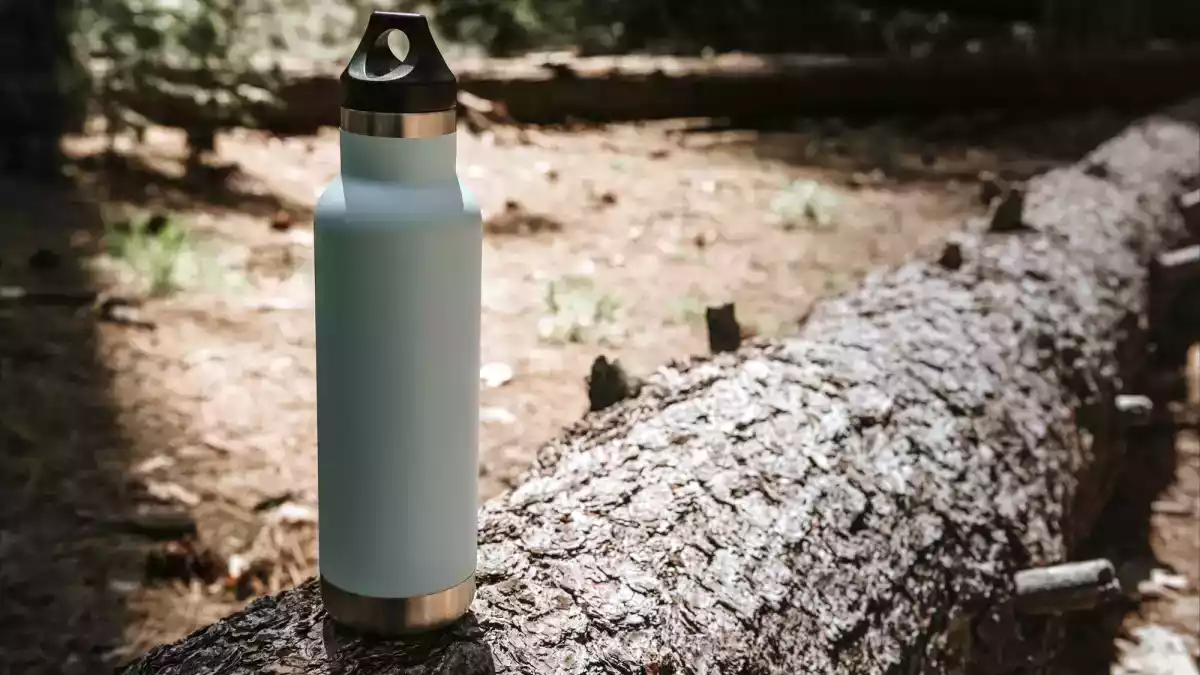Metal water bottles: a good idea or a bad friend for your health? What you need to know before drinking!

Let's face it, a lot of us have adopted the metal water bottle. Practical, ecological, pretty... it's got it all! Slipped into a bag for the office, a hike or even the gym, it goes everywhere with us. But behind this everyday companion, a few little questions sometimes come to mind: is it really so safe for our health? Doesn't the metal from the gourd end up in our drinks?
Let's take stock :)
Aluminium: light, practical... but not always reassuring
When it comes to metal water bottles, many are made of aluminum. Advantage: it's light and doesn't weigh much in the bag. But bare aluminum isn't exactly a good idea in a water bottle. That's why it's often covered with an inner lining, to prevent the metal from wandering into your drink.
The problem is that some of these linings contain BPA, a well-known endocrine disruptor (La Boîte à Objets). And when the gourd heats up or you put a slightly acidic drink in it, it can encourage substances to migrate into the liquid (Healthy Lunch).
What's more, over time, the coating can become damaged, especially if the bottle is dropped or improperly cleaned. The result is a risk of aluminum particles getting into the drink. Not great, especially if you use it every day (Healthy Lunch).
Stainless steel: more reassuring, but not perfect either
Faced with these doubts, many turn to stainless steel, often presented as the Rolls Royce of water bottles. And it's true that food-grade stainless steel is far more stable than aluminum. No dubious coatings here, and great resistance over time.
But even stainless steel has its little flaws. Highly acidic (e.g. lemon juice) or hot liquids can cause a slight migration of nickel or chromium into the beverage (Voyager Vert). Nothing catastrophic for most of us, rest assured. But if you're sensitive or allergic to nickel, you'd better know.
A simple tip: opt for certified food-grade stainless steel bottles, and vary your beverages so you don't always use acidic juices.
Hygiene: the essential never to be neglected
Regardless of the material of your water bottle, there's one point you mustn't forget: cleaning. You'd think that with water inside, it wouldn't be so important... and yet!
Poorly cleaned bottles are veritable breeding grounds for bacteria, especially if left closed with a stagnant drink base. Remember to scrub the neck and cap thoroughly, and let the bottle air-dry after each wash. A small gesture that changes everything!
In short: the gourd, yes, but not just any old way
There's no question of throwing away our pretty water bottles. Properly used, they remain invaluable everyday allies, both for our health and for the planet. All it takes is a few simple good habits.
Choose food-grade stainless steel, avoid drinks that are too acidic or too hot, keep an eye on the condition of your water bottle (especially if it's made of aluminium), and above all: clean it lovingly after each use.
That way, you can continue sipping your homemade beverages with peace of mind and a smile on your face. Because indulging yourself while taking care of yourself is still the best recipe.
Sources
- La Boîte à Objets (Is an aluminum water bottle safe for your health?)
- Healthy Lunch (What are the dangers of aluminum water bottles?)
- Voyager Vert (The dangers and advantages of stainless steel water bottles)
- Ma Grande Taille (Here's what to watch out for when using a water bottle)
You may be interested in:
 Adèle Peyches
Adèle Peyches


Comments